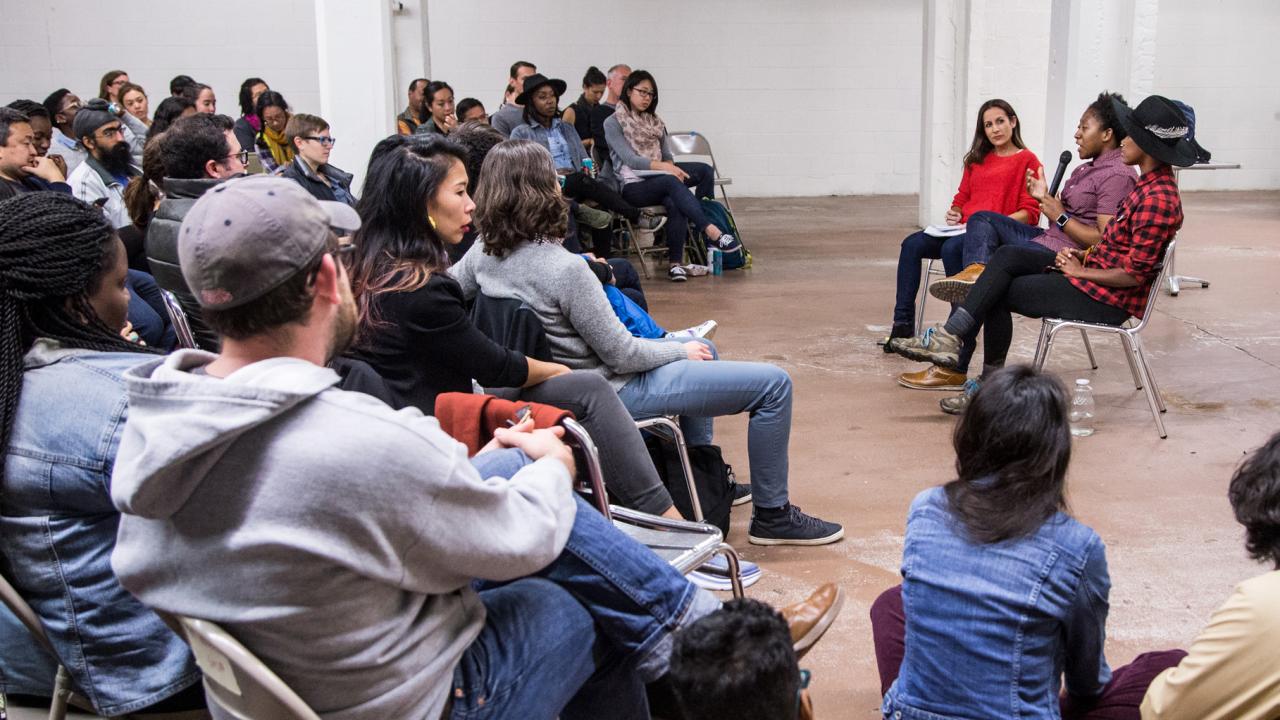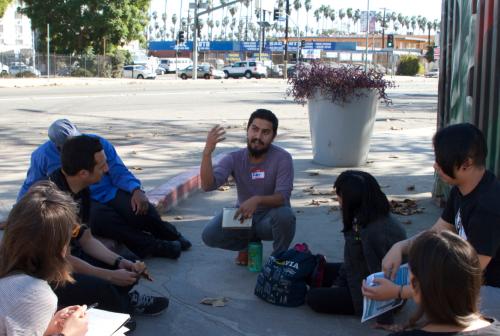
Performative vs. Authentic Equity Work
How the California Transportation Sector Can Continue to Do Better
Transportation equity is a priority for agencies across California. This policy brief, conducted by FRI Associate Director Sarah McCullough and C. Sequoia Erasmus, highlights the importance of distinguishing between performative and authentic equity work. Performative equity refers to actions, words, or gestures that claim to do equity work, but in practice do not improve matters for those historically oppressed, and in turn, reinforces root systems of dominance and status quo. Authentic equity work results in meaningful change to those most impacted by historical racism and oppression. Doing authentic equity work means moving away from defensiveness, tokenism, and checklists, and towards collective support, dignity, and long term engagement.
The study was conducted by interviewing twenty eight transportation professionals who identify as Black or people of color (BPOC), to learn about their assessment of transportation equity work in California. Their lived experiences being BPOC, and their expertise in transportation gives them unique and valuable insight to assess equity work. Interviews were then analyzed based on recurring themes, and the following are eight key findings that support authentic transportation equity.
-

Untokening California, 2017. Photo: Michael Anaya. Know the history. Local communities know the history of transportation inequity because they lived it. Transportation planners need to know it too, at both the local and national level. It is also helpful to know of past local community engagement efforts and their outcomes. Learning and reflecting on the ongoing impacts of these histories and engagements can better equip transportation planners to have honest and difficult conversations. Without this prep work, planners are more likely to respond to community critique from a place of defensiveness rather than support. -
Learn about inequity in the profession. BPOC transportation professionals continue to experience discrimination, microaggressions, tokenism, and other forms of bias in the workplace. Good allyship includes listening to them, noticing the input and reactions of BPOC colleagues, and elevating the voices of BPOC staff. It also requires giving BPOC staff more power and leadership. Finally, support the creation of affinity groups as a site for learning. This reduces the emotional labor burden of BPOC professionals.
-
Maintain a “learner’s mindset.” Open curiosity and reflection on one’s own behavior can create a mindset more receptive to critique. Cultivating this “learner’s mindset” sets the stage for honesty and transparency, a precondition for the changes needed in transportation. It can also lead to more humility, another important element of authentic equity work.
-
Focus on retention. Retention of BPOC professionals within transportation planning, policy, and advocacy remains a challenge. Authentic equity work may require culture change to retain these talented staff. This requires strong institutional buy-in for and investment in equity practitioners.
-
Shift funding structures and priorities. Equity requires a redistribution in who gets funded, more flexibility in how funds can be spent, and expanded opportunities for programmatic and “human infrastructure.” Authentic solutions arise from ongoing community engagement with those communities who have been most neglected and residents who are most vulnerable. Creating and maintaining continuous relationships with historically neglected communities is a complex and resource intensive process. And yet, it is requisite for equity work that addresses past injustices and creates more just futures.
-
Public transit is part of new mobilities. Conversations about shared mobilities and other new technologies need to occur alongside improvements to existing public transportation infrastructure. New innovations should emerge from local community needs.
-
Safety solutions must be community driven. Too often, law enforcement is seen as the answer to safety concerns. This equivalency downplays the disproportionate violence BPOC communities face at the hands of police. Community-based solutions that value existing safety networks offer innovative solutions.
-
Define equity. Institutional equity work benefits from having a clear and precise definition and vision driving the work.